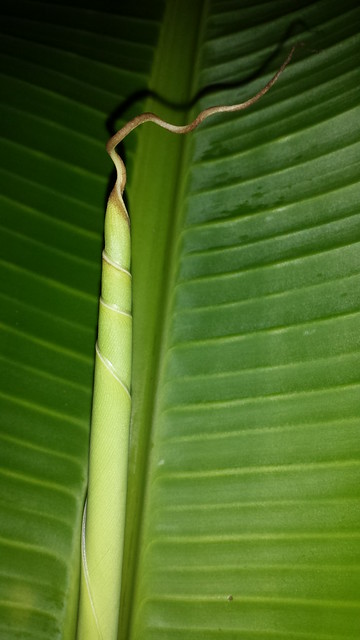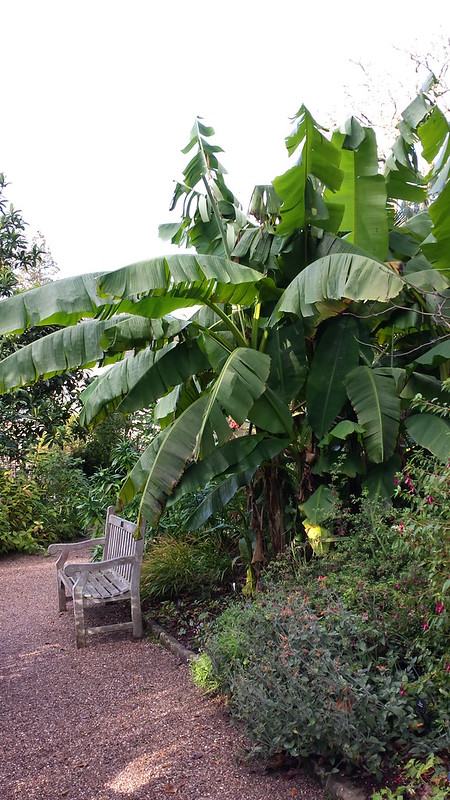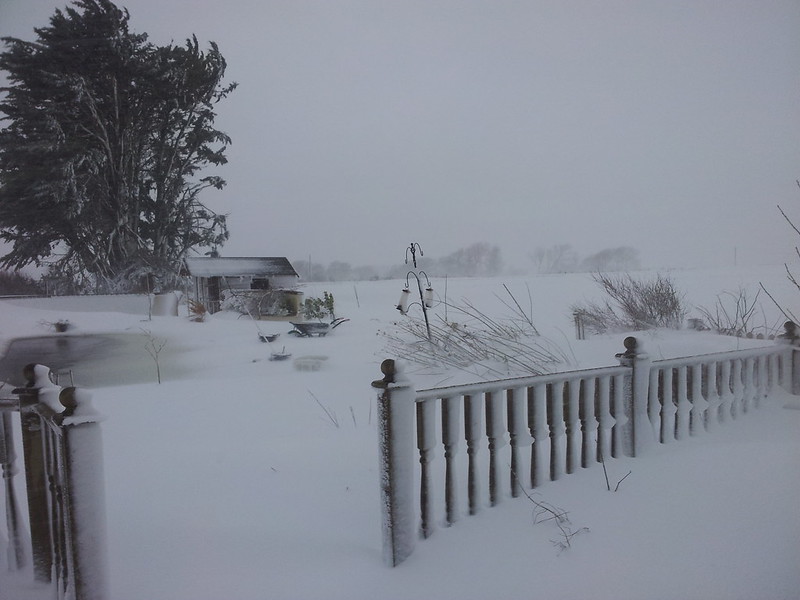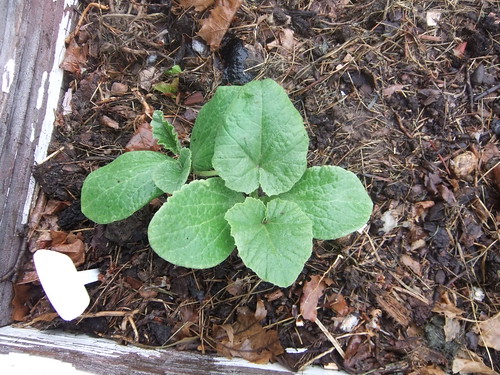|
|
Post by taihaku on Oct 28, 2015 4:29:03 GMT -5
So this discussion started in the Avocado thread within the orchard forum. Rather than derail that thread I thought I'd start a separate thread, add some pictures of where I am with my project and generally avoid derailing the avo thread.  Here's where we got to. I'll throw up some varietal photos and further thoughts once I get home . But even though avacados might be out (unless grown in a greenhouse), i may someday try planting a grove of cold hardy bananas. Apparently those exist quite readily. I grow 3 types of frost hardy bananas and am putting together a grove. I will try and pull a post together in due course but essentially the truly frost hardy banana species do not produce edible fruit - I'm talking here of Musa basjoo and Musa sikkimensis. They do however produce lovely banana leaves that have various culinary uses and they do look really cool.
There are also a few purported hybrids between edible banana varieties and these hardy types: Musa "Helen's Hybrid" is probably the best known - these will fruit in the right conditions but will not give you something that looks (or tastes) like a shop bought 'nana but it will be edible. New forms in this category seem to turn up pretty regularly.
Lastly there are the edible varieties grown in marginal regions (Sikkim or Dharjeeling are good names to see) or hybrids therewith which are probably your best bet - these will probably need overwintering somewhere frost free but might give you a shout on a warm summer having done so.
There is some fantastic info round this on musa.org
Musa basjoo and M. sikkimensis are both diploid. Crossing between them will result in very F1s with very seedy fruit. It might be worthwhile to screen a bunch of F2s for increased cold-hardiness. If you want edible fruit on a cold-hardy plant, you'd have to construct a tetraploid from one of the more cold-hardy types to cross to one of the diploid examples. By "edible" I mean, "not full of seeds". I have no idea how the fruit would taste.
This is the aforementioned Musa basjoo at RHS Rosemoor (because mine aren't yet that big). These will see snow most winters I would guess and some quite hard frosts.  20141105_113257 by Wayne, on Flickr 20141105_113257 by Wayne, on Flickr
|
|
|
|
Post by richardw on Oct 28, 2015 12:52:00 GMT -5
Interesting,so what temps are you saying they can handle?
|
|
|
|
Post by taihaku on Oct 28, 2015 12:56:00 GMT -5
Interesting,so what temps are you saying they can handle? My sikkimensis have survived 3 days under 2 feet of snow. In terms of frost without snow hard to say we don't get very cold temperatures but I know if mulched well basjoo is supposed to handle serious cold (it dies back and reshoots from the roots though). Nothing edible will currently touch that kind of cold but as I mentioned in the right marketplace the leaves themselves could be an interesting little side crop if someone has a spare corner. |
|
|
|
Post by taihaku on Oct 28, 2015 13:18:31 GMT -5
Interesting,so what temps are you saying they can handle? My sikkimensis have survived 3 days under 2 feet of snow. In terms of frost without snow hard to say we don't get very cold temperatures but I know if mulched well basjoo is supposed to handle serious cold (it dies back and reshoots from the roots though). Nothing edible will currently touch that kind of cold but as I mentioned in the right marketplace the leaves themselves could be an interesting little side crop if someone has a spare corner. You can actually see one of my clumps of Musa sikkimensis just beyond the wheel barrow in this shot....  |
|
|
|
Post by richardw on Oct 28, 2015 13:40:20 GMT -5
Wow that is amazing, man that photo makes me shiver,
|
|
|
|
Post by darrenabbey on Oct 28, 2015 20:25:18 GMT -5
I'm living in southern Minnesota and have doubted any Musa specimens would have a chance of surviving here. Your last photo makes me wonder. Where are those plants exactly?
|
|
|
|
Post by taihaku on Feb 25, 2016 5:28:52 GMT -5
Oops missed this reply...... I'm living in southern Minnesota and have doubted any Musa specimens would have a chance of surviving here. Your last photo makes me wonder. Where are those plants exactly? They're in Guernsey, British Channel Islands Darren - I guess it's important to note that they got that for 3 days, most of the winter was above freezing with no snow.
I just bought two seedlings of what was described on Ebay as Musa yunnanensis but which may or may not actually be Musa iterans. This is another supposedly hardy species so we'll see how it goes. I will probably scale these up for a year in pots before risking them outside.
Meanwhile, touching wood and barring another late March cold snap, at the very least my biggest Musa sikkimensis clump seems to have made it through winter unscathed. At least two of the pseudostems are still pushing rollers. If that growth can be carried forth with no backsliding this year we should have seriously big plants this year. basjoo and Helen's hybrid are both going well inside and will be planted out permanently once the risk of frost passes.
|
|
|
|
Post by diane on Feb 25, 2016 12:29:13 GMT -5
I'm not getting any banana information on musa.org
Instead, meningitis, university student society, religious groups .......
|
|
|
|
Post by taihaku on Feb 27, 2016 5:31:00 GMT -5
I'm not getting any banana information on musa.org Instead, meningitis, university student society, religious groups ....... Ah. That would be because I should have suggested you go to Bananas.org - my bad!!! |
|
|
|
Post by oxbowfarm on Jun 15, 2018 6:28:52 GMT -5
I recently rec'd in trade two Musa basjoo pups from esoteric_agriculture (props to him for some of the most beautifully packed materials I've ever gotten from any plant/seed trader). I've very excited to grow these, I am looking to become fully self sufficient in banana leaves for Oaxacan/Guatemalan style tamales. Right now they are still in pots in my greenhouse while I contemplate the right planting sites. I do get strong wind from time to time, so I'm trying to figure out a wind protected set-up for at least one of the plants to keep the leaves as intact as possible. |
|
|
|
Post by reed on Jun 15, 2018 7:30:22 GMT -5
I just received a banana tree as a gift yesterday. No idea what kind it is. It's about four feet tall and young leaves and veins of older leaves are red. I had a little empty spot in the garden so planted it there. I don't really expect it to live through winter and no place for such a large house plant, just want to see how big it might get.
|
|
|
|
Post by oxbowfarm on Jun 15, 2018 8:15:08 GMT -5
If its a basjoo it might be able to overwinter for you. esoteric_agriculture says he doesn't really do anything to protect it, and it dies back to the soil for him and regrows from the corm in zone 6. I'm planning on doing some heavy protection for my cold frosty spot in zone 5. Here's his video on his plant. |
|
|
|
Post by imgrimmer on Jun 15, 2018 9:46:23 GMT -5
I have a basjoo in my garden. It freezes down in winter and come back in spring. Last winter it withstand at least -12°C / 9°F without a snowcover. It never flowered here but I know from others that it starts late in summer and fruits need to overwinter until the next year. At least here is no chance for fruits without a heated greenhouse.
I saw one in Toscany, Italy the owner told me that it has fruits in some years.
|
|
|
|
Post by imgrimmer on Jun 16, 2018 3:25:01 GMT -5
Maybe using Mongee to produce hybrids?
|
|


 20141105_113257 by Wayne, on Flickr
20141105_113257 by Wayne, on Flickr
